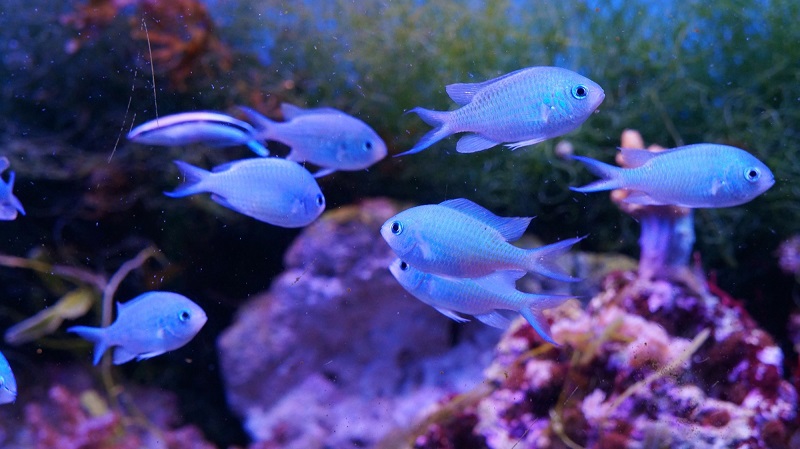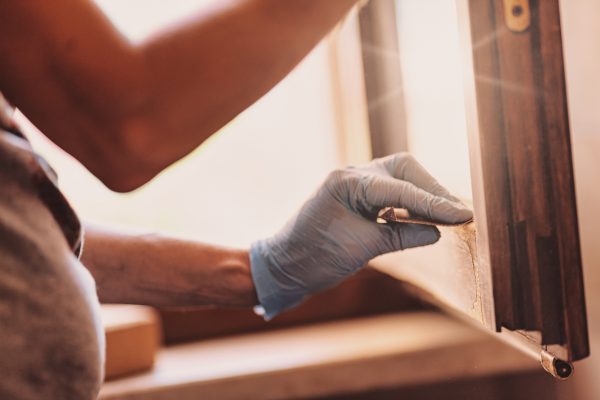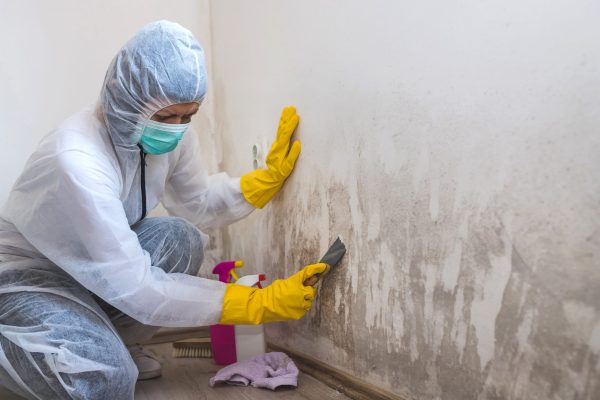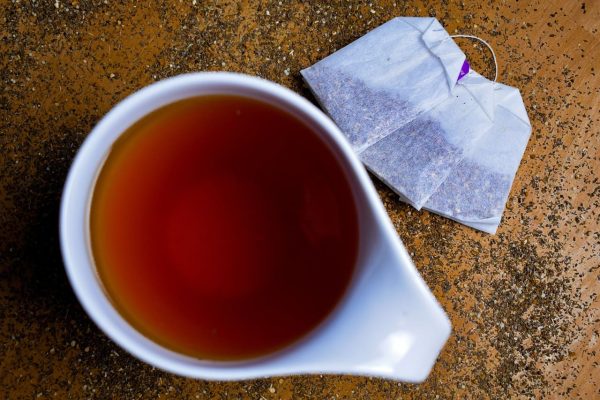Are any aquarium algae types dangerous for your fish?
The short answer is NO! Surprisingly enough, most algae are okay in moderation. These plants photosynthesize, adding new oxygen. They also provide food for snails and other bottom feeders.
But what if algae has overtaken your entire tank? Then you might have a problem – too much of a good thing is a bad thing after all.
Table of Contents
1. Black Beard Algae
Black beard algae develops in think clumps of black or grey strands – like a beard.
Like the pirate, black beard algae is challenging to remove. Before your fish aquarium gets overtaken, add slight amounts of liquid carbon to the water (assuming your plants can take the dosage).
If liquid carbon worries you, buy Florida flag fish or siamese algae eaters to eat the algae. You can also remove the affected plant/structure, and spray the algae with 3% hydrogen peroxide, leave for 5 minutes, rinse and replace.
Repeat until your black algae aquarium is under control.
2. Hair Algae
Hair algae grows fast and is usually caused by to much iron, insufficient nutrients, or too much light.
Reduce the lighting period, or add a full spectrum fertilizer. You can also add Amano shrimp, molly’s, Florida flag fish, or siamese algae eaters to get the problem under control.
In extreme cases, remove clumps of algae yourself to help your tank recover.
3. Green Dust Algae
This alga appears as a green slime over the inside of the tank. It usually forms in newer aquariums that haven’t had a chance to normalize.
This form of algae is easy to remove. Allow the algae to grow for four weeks, and then do a water change. Once the water level has lowered, wipe off the algae. After four weeks of growth, the algae will have died and released spores, so a simple wipe-down at this time should solve the majority of your troubles.
You can also buy some Bristlenose Plecos if you can’t wait for a water change.
4. Brown Diatom Algae
This form of aquarium algae also appears in newly made aquariums and looks like brown to greenish dust and specs over your tank. After the tank’s water has had a chance to normalize, the algae should shrink to a manageable size in no time at all.
If you still have a brown algae aquarium after normalizing, or you would like to spread up the process, you can also get an algae eater. Any variety should love to snack on this plant, so no matter the snail, bottom-feeding fish, or shrimp will do.
5. Green Water
Green water is just that. It turns your tank water green. Green water is caused by an extreme imbalance caused by overfeeding, over lighting, to man nutrients, or too much ammonia.
You won’t control this outbreak with a water change or with chemicals, so your only options are blacking out the tank for a week or by purchasing a UV sterilizer.
6. Green Spot Algae
Green spot algae looks like exactly that, green spots all over your aquarium. This varietal is hard to clean and commonly comes from over-lighting your habitat.
You can scrape and scrub the algae off of the tank walls by yourself or you can buy nerite snails.
Go Forth and Look for These Aquarium Algae Types!
This brief overview of the different common types of algae should get you started, but we would encourage you to do deeper research on each of the aquarium algae types for yourself. Especially if you have a saltwater aquarium.
Now, it’s time to go out and start taking care of your aquarium.
We believe in you!











